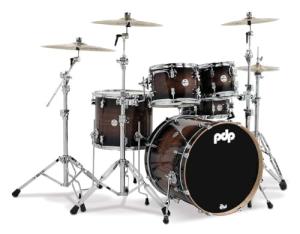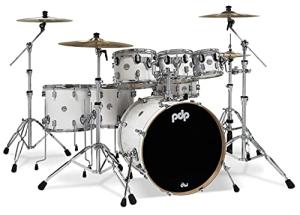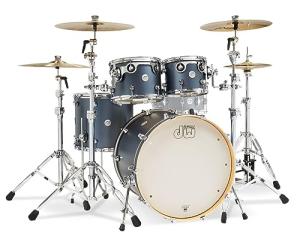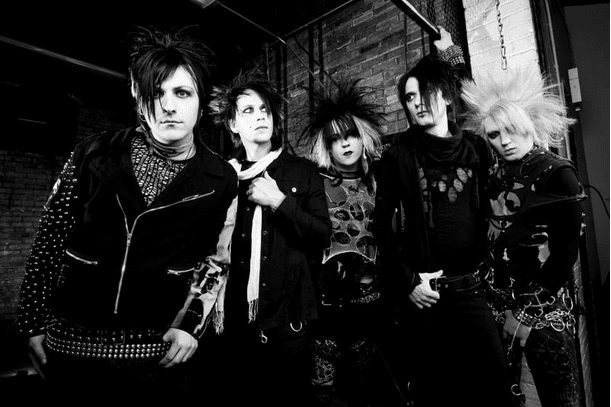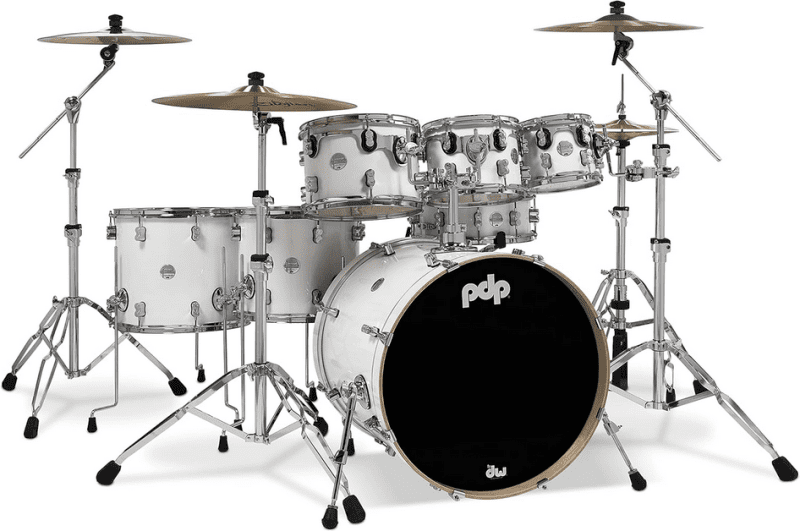If you've ever listened to punk rock music, you know that the drums play a crucial role in creating the fast-paced, high-energy sound that defines the genre.
Punk drumming is characterized by its fast, aggressive beats. The drummer's ability to maintain a steady rhythm while playing at breakneck speeds is also a defining feature.
In this article, we'll explore the role of drums in punk rock music and how they contribute to the unique sound of the genre.

To understand the role of drums in punk rock, it's important to first examine the historical context of the genre.
Punk rock emerged in the mid-1970s as a reaction to the perceived commercialization and homogenization of rock music. The genre was characterized by its raw, stripped-down sound and rebellious, anti-establishment lyrics.
Drums played a crucial role in creating this sound. Punk drummers often forwent the complex rhythms and fills of other genres in favor of a more straightforward, driving beat.
In the following sections, we'll explore the technical aspects of punk drumming. This includes drumming techniques and tips for aspiring punk drummers.
We'll also examine the cultural impact of punk rock and the role that stage presence and showmanship play in the genre. Finally, we'll take a look at some notable punk drummers and their contributions to the genre.
Key Takeaways
- Drums play a crucial role in creating the fast-paced, high-energy sound of punk rock music.
- Punk drumming is characterized by its fast, aggressive beats and the drummer's ability to maintain a steady rhythm at high speeds.
- Punk rock emerged in the mid-1970s as a reaction to the perceived commercialization of rock music. Drums played a crucial role in creating the raw, rebellious sound of the genre.
Historical Context of Drums in Punk Rock
Punk rock emerged in the 1970s as a response to the commercialization of rock music. This genre is characterized by its fast and aggressive sound, simple chord progressions, and anti-establishment lyrics.
The drums play a crucial role in punk rock music as they provide the driving force behind the rhythm and energy of the songs.
Punk Rock Emergence and Drumming Style
In the early days of punk rock, drumming was often simple and straightforward, with a focus on speed and intensity rather than technical proficiency.
The Ramones, one of the most influential punk bands of all time, used a basic drum beat consisting of eighth notes on the hi-hat and a steady backbeat on the snare drum.
This style of drumming became a hallmark of the genre and is still used by many punk bands today.
As punk rock evolved, so did the drumming style. Bands like Black Flag and Bad Religion incorporated more complex rhythms and time signatures into their music, while still maintaining the fast and aggressive sound that defines punk rock.
These bands also experimented with different drum sounds, using techniques like double bass drumming and blast beats to create a more intense and chaotic sound.
Influential Punk Drummers and Bands
Several punk drummers and bands have had a significant impact on the genre and helped to shape its sound.
The Ramones' Tommy Ramone is widely regarded as one of the most influential punk drummers of all time. Meanwhile, Black Flag's Bill Stevenson and Bad Religion's Brooks Wackerman are known for their technical proficiency and innovative drumming styles.
Other influential punk bands include the Sex Pistols, who helped to popularize punk rock in the UK, and NOFX, who are known for their fast and melodic punk sound.
Technical Aspects of Punk Drumming
Punk rock drumming is characterized by its fast-paced, high-energy, and aggressive style. It is the driving force behind the music, providing the backbone and tight rhythm that keeps the band together.
In this section, we will discuss the technical aspects of punk drumming, including basic drum beats and tempos, snare drum techniques, bass drum footwork, and hi-hat and cymbal usage.
Basic Drum Beats and Tempos
At the core of punk drumming lies a solid foundation of basic drum beats. These include simple patterns such as quarter notes, eighth notes, and basic rock rhythms.
These beats are played at a fast tempo, usually between 160-200 beats per minute, and with a high-energy, driving force that keeps the music moving forward.
Snare Drum Techniques
The snare drum is one of the most important elements of punk rock drumming. It is used to create the backbeat, which is the driving force behind the music.
The backbeat is created by playing the snare drum on the second and fourth beats of each measure. In addition to the backbeat, the snare drum is also used to create other variations and rhythms, such as flams, single stroke rolls, and double strokes.
Bass Drum Footwork
The bass drum is another essential element of punk rock drumming. It is used to create a tight, fast-paced rhythm that drives the music forward.
To achieve this, punk drummers use a variety of bass drum footwork techniques, such as the slide technique, the heel-toe technique, and the bass drum double strokes.
These techniques allow the drummer to play fast, tight rhythms with precision and control.
Hi-Hat and Cymbal Usage
The hi-hat and cymbals are used to create variations and add texture to the music.
Punk drummers use a variety of hi-hat techniques, such as open hi-hats and closed hi-hats, to create different sounds and rhythms. Cymbals are also used to create accents and crashes, which add energy and excitement to the music.
Drumming Techniques and Tips

If you want to excel in punk rock drumming, you need to develop speed, precision, and endurance. Here are some techniques and tips to help you build a solid foundation for your drumming skills:
Developing Speed and Precision
To play punk beats at intense speeds, you need to develop your speed and precision.
One of the best ways to improve your speed is to practice with a metronome. Start slow and gradually increase the tempo as you get comfortable with the rhythm.
Another way to improve your precision is to focus on your timing. Make sure you hit the drums at the right time and with the right intensity.
Practice playing along to drum lesson videos or sheet music to help you develop your timing and precision.
Building Stamina and Endurance
Punk rock drumming requires a lot of stamina and endurance. To build your stamina, practice playing for longer periods of time.
Start with shorter sessions and gradually increase the length of your practice sessions.
Another way to build your endurance is to practice with a double bass drum pedal. This will help you develop the strength and coordination needed to play fast and intense punk beats.
Incorporating Drum Fills and Variations
To add aggression and intensity to your punk rock drumming, you need to incorporate drum fills and variations.
Practice playing different drum fills and variations to add variety to your beats.
One way to practice drum fills is to use jam tracks or play-along loops. These tracks will help you practice your timing and coordination while playing different fills and variations.
Practice Routines and Exercises
To excel in punk rock drumming, you need to practice regularly.
Develop a practice routine that includes exercises to help you improve your drumming skills.
Practice drum rudiments to improve your technique and coordination.
Use sheet music to practice playing different punk beats and rhythms.
Incorporate jam tracks and play-along loops to help you practice playing with a band.
By following these techniques and tips, you can develop the skills needed to excel in punk rock drumming.
Keep practicing and pushing yourself to improve your speed, precision, and endurance, and you'll be playing like a pro in no time.
DISCLAIMER
This document is provided for general information purposes only and should not be relied upon as providing legal advice, technical, or specific operational guidance to the reader, whether as to the practices described in the document or the applicable legal requirements and regulations. percussionpros.com expressly disclaims any responsibility for liability arising from or related to the use or misuse of any information in this document.
